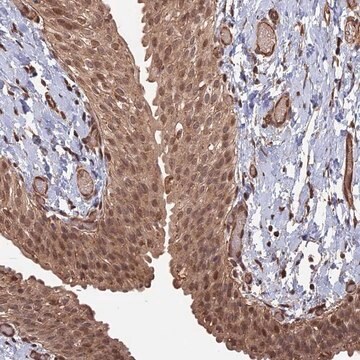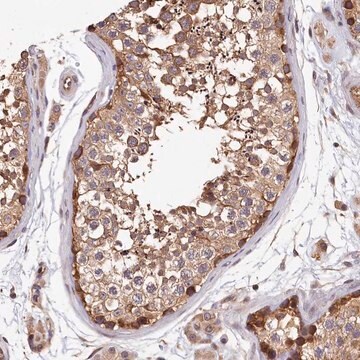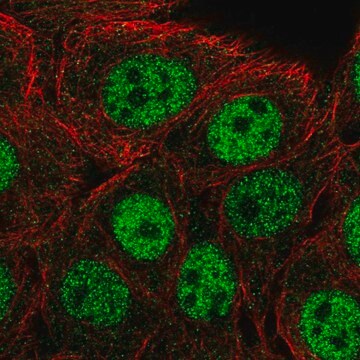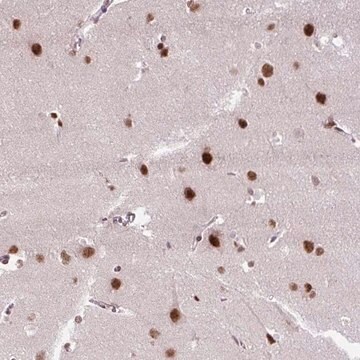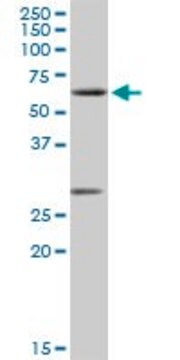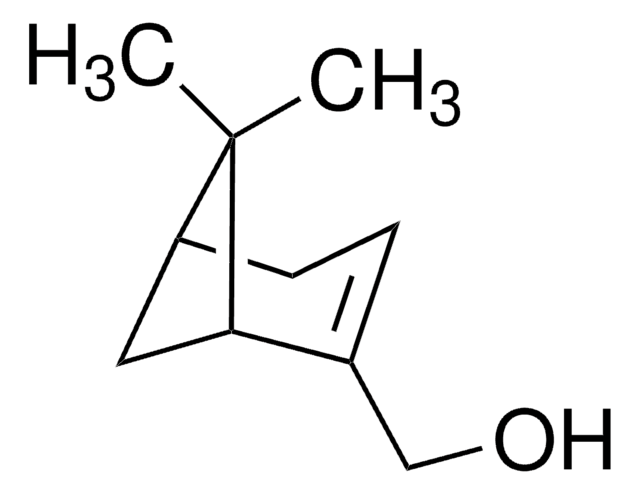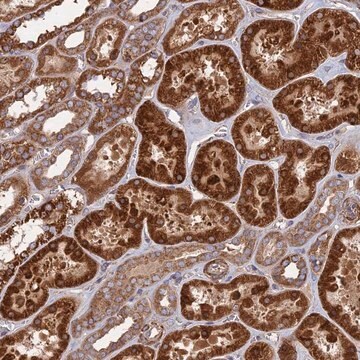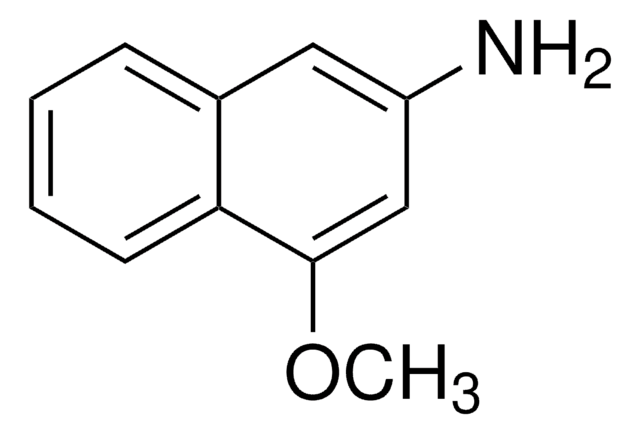ABN2290
Anti-LHFPL5
Synonym(e):
LHFPL tetraspan subfamily member 5 protein, Lipoma HMGIC fusion partner-like 5 protein, Tetraspan membrane protein of hair cell stereocilia
About This Item
WB
western blot: suitable
Empfohlene Produkte
Biologische Quelle
rabbit
Qualitätsniveau
Antikörperform
purified antibody
Antikörper-Produkttyp
primary antibodies
Klon
N/A, polyclonal
Mol-Gew.
calculated mol wt 24.2 kDa
Speziesreaktivität
human
Speziesreaktivität (Voraussage durch Homologie)
monkey
Verpackung
antibody small pack of 100 μL
Methode(n)
immunocytochemistry: suitable
western blot: suitable
Isotyp
IgG
Epitopsequenz
C-terminal
Protein-ID-Hinterlegungsnummer
UniProt-Hinterlegungsnummer
Lagertemp.
-10 to -25°C
Angaben zum Gen
human ... LHFPL5(222662)
Allgemeine Beschreibung
Spezifität
Immunogen
Anwendung
Evaluated by Immunocytochemistry in HeLa cells.
Immunocytochemistry Analysis: A 1:50 dilution of this antibody detected LHFPL5 in HeLa cells.
Tested applications
Western Blotting Analysis: A representative lot detected LHFPL5 in Western Blotting applications (Yu, Z., et. al. (2020). Proc Natl Acad Sci USA. 117(47); 29894-29903).
Western Blotting Analysis: A 1:1,000 dilution from a representative lot detected LHFPL5 in HEK293 cells transfected with LHFPL5 (TMHS) protein.
Immunocytochemistry Analysis: A representative lot detected LHFPL5 in Immunocytochemistry applications (Yu, Z., et. al. (2020). Proc Natl Acad Sci USA. 117(47); 29894-29903).
Note: Actual optimal working dilutions must be determined by end user as specimens, and experimental conditions may vary with the end user.
Physikalische Form
Lagerung und Haltbarkeit
Sonstige Hinweise
Haftungsausschluss
Sie haben nicht das passende Produkt gefunden?
Probieren Sie unser Produkt-Auswahlhilfe. aus.
Lagerklassenschlüssel
11 - Combustible Solids
WGK
WGK 1
Analysenzertifikate (COA)
Suchen Sie nach Analysenzertifikate (COA), indem Sie die Lot-/Chargennummer des Produkts eingeben. Lot- und Chargennummern sind auf dem Produktetikett hinter den Wörtern ‘Lot’ oder ‘Batch’ (Lot oder Charge) zu finden.
Besitzen Sie dieses Produkt bereits?
In der Dokumentenbibliothek finden Sie die Dokumentation zu den Produkten, die Sie kürzlich erworben haben.
Unser Team von Wissenschaftlern verfügt über Erfahrung in allen Forschungsbereichen einschließlich Life Science, Materialwissenschaften, chemischer Synthese, Chromatographie, Analytik und vielen mehr..
Setzen Sie sich mit dem technischen Dienst in Verbindung.